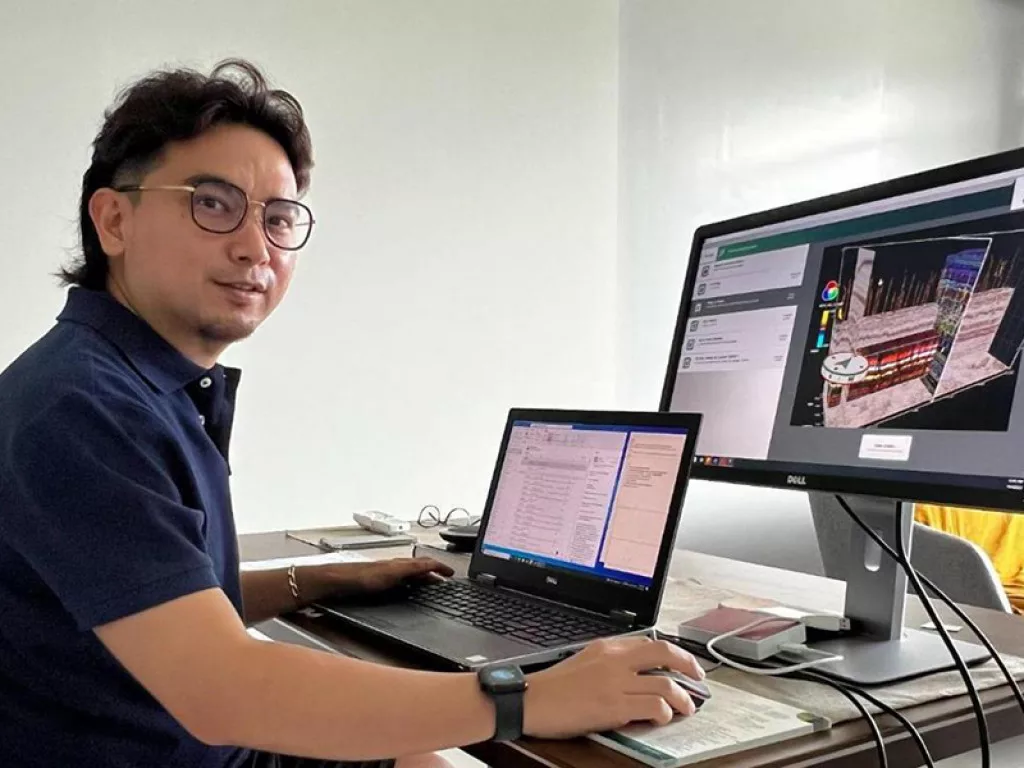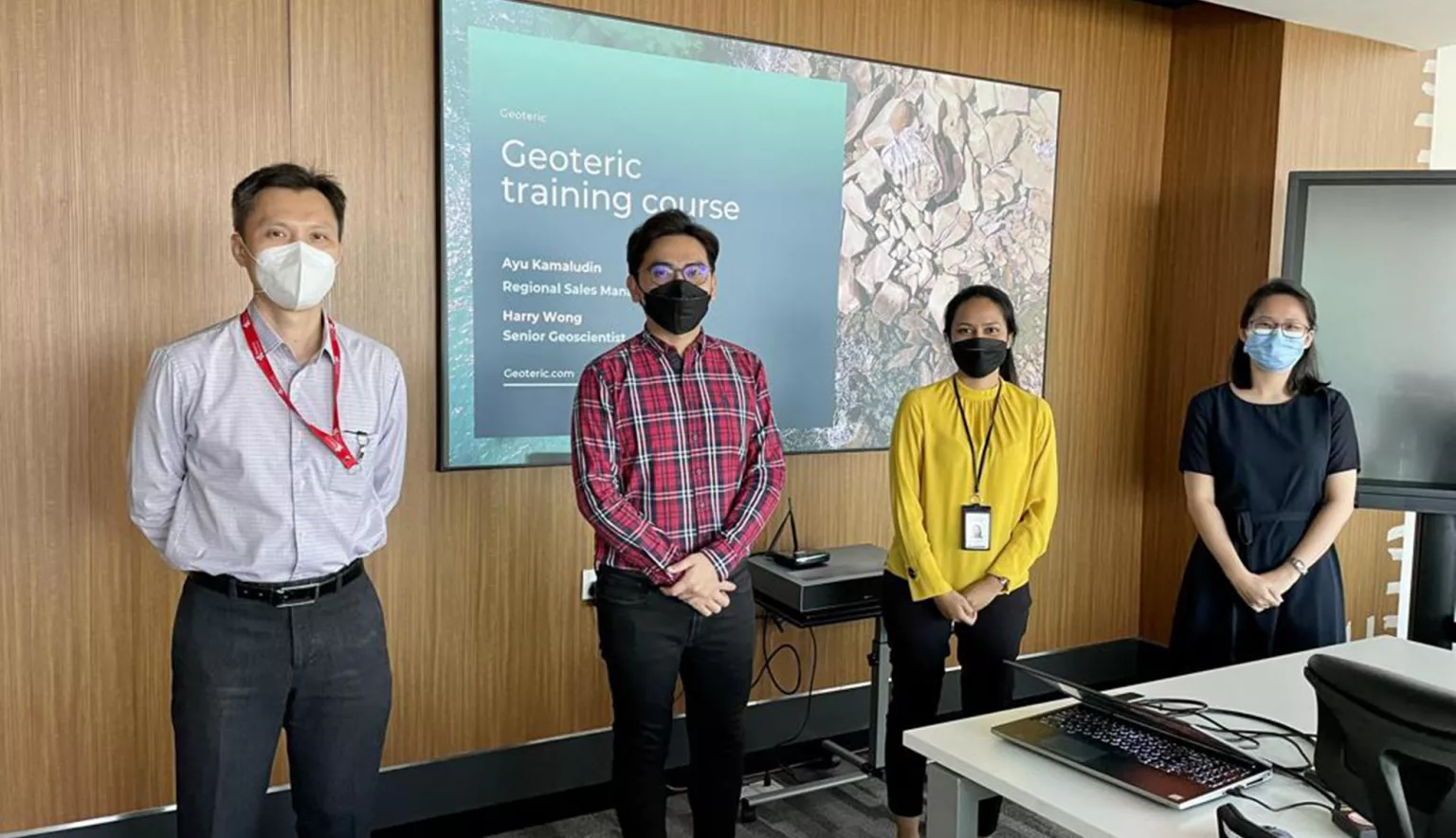Leveraging the intersection of human ingenuity and artificial intelligence to reach new levels of geological understanding, Geoteric is ushering in a new future for advanced technologies. Senior Geoscientist Harry Wong tells us more.
- Q AND A WITH HARRY WONG, GEOTERIC
- Could you briefly introduce us to Geoteric and tell us about some of your work across Asia?
- How does Geoteric seek to unleash the potential of seismic data?
- How can AI play a significant role in solving the energy trilemma?
- How will AI help players in the oil and gas and renewables industries reach carbon reduction targets more quickly?
Q AND A WITH HARRY WONG, GEOTERIC
Could you briefly introduce us to Geoteric and tell us about some of your work across Asia?
Harry Wong (HW): Geoteric is a world-leading artificial intelligence (AI) seismic interpretation software provider to the energy industry. Essentially, we bring together human ingenuity and AI to equip developers in the energy space – oil and gas, offshore wind and carbon capture storage (CCS) – with a better understanding of the earth. Our software provides them with that understanding and highlights potential risks to increase safety with optimised operations. But, more than that, the software allows them to reach these conclusions more quickly and accurately than they would using traditional seismic interpretation methods.
One of our more recent in-region projects was an AI fault detection study for the South Furious field, offshore Malaysia. This is a very complex tectonic setting with varying faults and trends: manual interpretation would have taken months to complete but our software was able to reduce that to a few weeks, enabling our client to improve their understanding of the faulting in the field and its overall prospects.
How does Geoteric seek to unleash the potential of seismic data?
HW: The key to unleashing the potential of seismic data lies in the combination of artificial and human intelligence. AI has the power to transform the way the energy sector approaches projects by delivering greater reliability and speed, but it works best with the human touch. Collaboration is key. It’s not about AI replacing humans, but rather working with them.
Geoteric enables the analysis of 100 percent of a customer’s seismic data to give them a much better return on investment. An oil and gas operator, for example, might commission a study of a specific area of the subsurface to understand how to maximise production. That study will deliver a huge volume of seismic data about geological features that will be critical to informing project decisions from well placement to payback on investment.
However, the time and resources required to interpret that data using traditional methods means that only a tiny fraction of it can be considered. Our AI software rapidly and accurately interprets all the data to provide a holistic picture.
“We want to assist companies to meet net zero targets by understanding the earth. AI quite literally has the potential to save the world, and we want to help companies in the energy sector unlock that power”
Harry Wong, Senior Geoscientist, Geoteric
How can AI play a significant role in solving the energy trilemma?
HW: The energy trilemma focuses on decarbonisation, energy security and economic pressures – essentially, how to create sustainable, cost-effective energy projects for the future while ensuring that, throughout this transition, we maintain reliable supplies. It’s about balancing urgent policy with the needs of customer demands.
For me, one of the main roles that AI can play is ensuring speed without compromising on accuracy. A typical oil and gas project has traditionally taken as much as 30 years of development from the licensing phase to first production, but technology is the key to change. Using AI, our customers have been able to reduce the time spent on fault interpretation by as much as 95 percent, in some cases shortening interpretation timelines from years to weeks.
AI also addresses the affordability challenge. It provides a better return on seismic data investment by unlocking information about the subsurface – if developers drill in the right place, this of course also reduces project timescales. It gives developers confidence as they know they are basing decisions on the analysis of 100 percent of their seismic data, rather than just one small piece of the puzzle. A better understanding of the earth contributes to more sustainable decisions.
Put simply, AI can help energy companies to get it right. They can make the decisions that are right for them in terms of investment, that meet customer demands, and deliver the best outcomes for the planet.
How will AI help players in the oil and gas and renewables industries reach carbon reduction targets more quickly?
HW: Besides reducing overall project cycle times, it can support carbon reduction targets in more practical ways. For example, an oil and gas operator may have seismic data about a field that was initially captured up to three decades ago. If they want to re-examine that field to consider whether there may be additional hydrocarbons – bearing in mind that optimisation of existing fields is one of the pathways towards the reduction of greenhouse gas emissions – they may feel it necessary to reshoot the data. However, that activity carries a high carbon footprint. We enable developers to look at the original data set with a fresh pair of eyes, to interpret the data with AI technology that hadn’t even been considered when it was originally captured.
The foundations of our AI technology lie in the oil and gas sector, but in the last two to three years we have seen our solutions gain significant traction in renewable energy. We’re applying it to offshore wind to show in unparalleled detail how the formation of the seabed and shallow seabed might impact a project, and to allow geoscientists to detect, identify and classify geohazards. We’re also present in the CCS space, enabling developers to determine the suitability of sites below the earth’s surface for the storage of carbon.
AI not only supports us to reach the destination of the net zero journey more quickly, but is fundamental in helping to deliver sustainable, clean energy projects that will revolutionise how we create and harness energy.




































